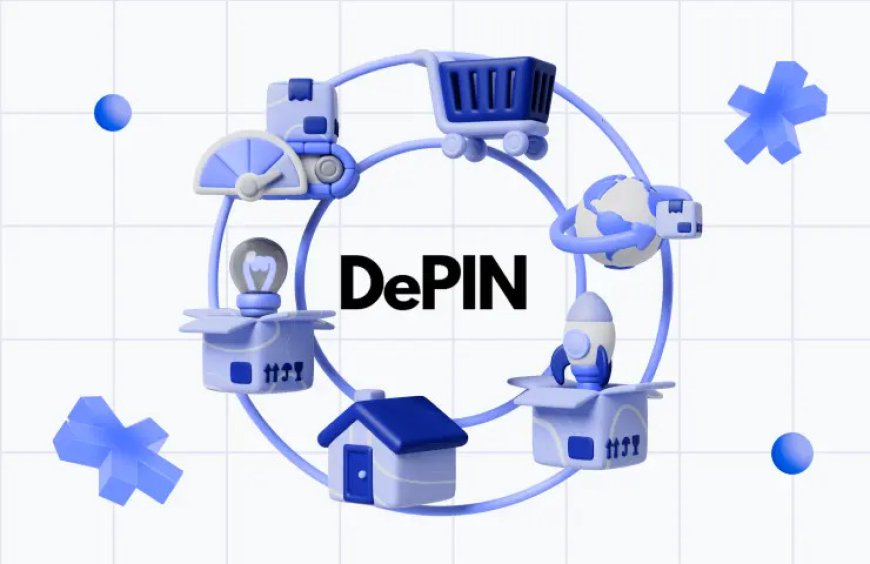Infrastructure Revolution: Important DePin Innovations to Keep an Eye on in 2024
The stable services provided by the physical asset will sufficiently enable the upcoming development of flexible resources for changing the application of different assets that vary from one asset to another.

The stable services provided by the physical asset will sufficiently enable the upcoming development of flexible resources for changing the application of different assets that vary from one asset to another. The decentralization component of DePin development ideas is expanded upon by incorporating more user-driven strategies that support robustness, comfort, and efficiency. In 2024, these are the major developments that will disrupt many businesses.
Effective Growth Strategies
One of the main concerns of developers in this field has been the ease of expansion of DePin networks. Growth is still anticipated, and in 2024, sophisticated protocols with specialized functions will be unveiled. Sharding, which was first used as a database technology, and layer-2 solutions will also be crucial since they will enable networks to validate more transactions, increasing network speed. As a result, we will see networks that support millions of users and financial transactions that result in usability and appeal. Fast expansion has been made possible, especially in areas like public services and supply chain management.
Pay attention to shared platforms and interoperability.
Since they appear to be a single configuration in the decentralized world, interoperability problems are still present but are become less frequent. GeFi will rely less on particular platforms in 2024, however they still rely on a number of DePin systems. Additionally, Headless will appear on many chains. Users can manage assets between platforms, for instance, without switching wallets or going through laborious procedures. This flexibility will encourage a more cohesive environment and enhance the user experience. In the end, this will encourage more people to use decentralized solutions.
AI-powered optimization
In 2024, artificial intelligence (AI) is expected to completely transform the DePin network. Anticipate AI systems that examine network traffic. Using machine learning techniques to allocate resources in real time based on user behavior Efficiency is increased by these systems. Boost energy efficiency and anticipate maintenance requirements. AI-powered networks, for instance, can automatically modify resource allocation in response to current demand, cutting down on waste and operating expenses. This invention does more than just increase productivity. However, it also guarantees more sustainability in the way physical infrastructure is managed.
Tokenization of Physical Assets
Physical asset tokenization is becoming more popular, and use is probably going to rise by 2024. This invention makes it possible for tangible things like real estate, cars, and artwork to be represented on the blockchain as digital tokens. This makes fractional ownership possible. As a result, more investors can now access markets that were previously closed to them. Luxury assets, for instance, can be tokenized. It permits several investors to purchase shares. Liquidity will rise with the democratization of asset ownership. Reduce obstacles to entry and open up new investment options for a range of investors.
Focus on sustainability
DePin technology is rapidly incorporating eco-friendly strategies in response to global sustainability issues. Emerging innovations in renewable energy sources include energy-saving algorithms and solar-powered nodes. Decentralized networks with real-time tracking and reporting capabilities are anticipated to actively monitor and lower carbon emissions by 2024. by adherence to sustainable practices. In addition to helping the environment, these networks attract users that respect environmental responsibility and sustainable business practices.
User-centered governance model
By its inherent nature, decentralization encourages user participation, and in 2024, the DePin development services network will provide more user-centric governance models, including innovations like power voting. Second, users will be able to take part in the decision-making process through a decentralized autonomous organization (DAO). Making the switch to democratic governance boosts involvement and trust in the community. For instance, community members can vote on upgrades or policy changes to guarantee that network development aligns with user needs. encourages users to take responsibility and ownership for their actions.
Improved safety procedures
Security is still of utmost importance as the decentralized network grows. Significant improvements in security procedures should be anticipated in 2024 to guard against a rise in cyberthreats. developments in cryptography, including multi-signature wallets and zero-knowledge proofs. It enhances data integrity and user privacy. These procedures will let users keep control over their funds and guarantee that transactions stay safe. Not just user assets will be safeguarded by enhanced security mechanisms. However, it also increases confidence in the decentralized system. which promotes broader acceptance.
Integration with IoT
One of the most intriguing developments in 2024 will be the merging of DePin technology with the Internet of Things (IoT), which will allow for the development of intelligent surroundings with decentralized networks that allow things to interact and take action on their own. Consider a logistics network in which delivery trucks' sensors use a decentralized platform to automatically establish their location and status. Operations in the supply chain are streamlined as a result. This cooperation boosts productivity, lowers expenses, and provides businesses and consumers with up-to-date information.
Conclusion:
Technology's Future In 2024, DePin development company is expected to make major strides that will revolutionize how we engage with physical infrastructure. from improved interoperability and scalability. from user-centered governance to sustainability. These developments will revolutionize the sector and spur broad adoption.
